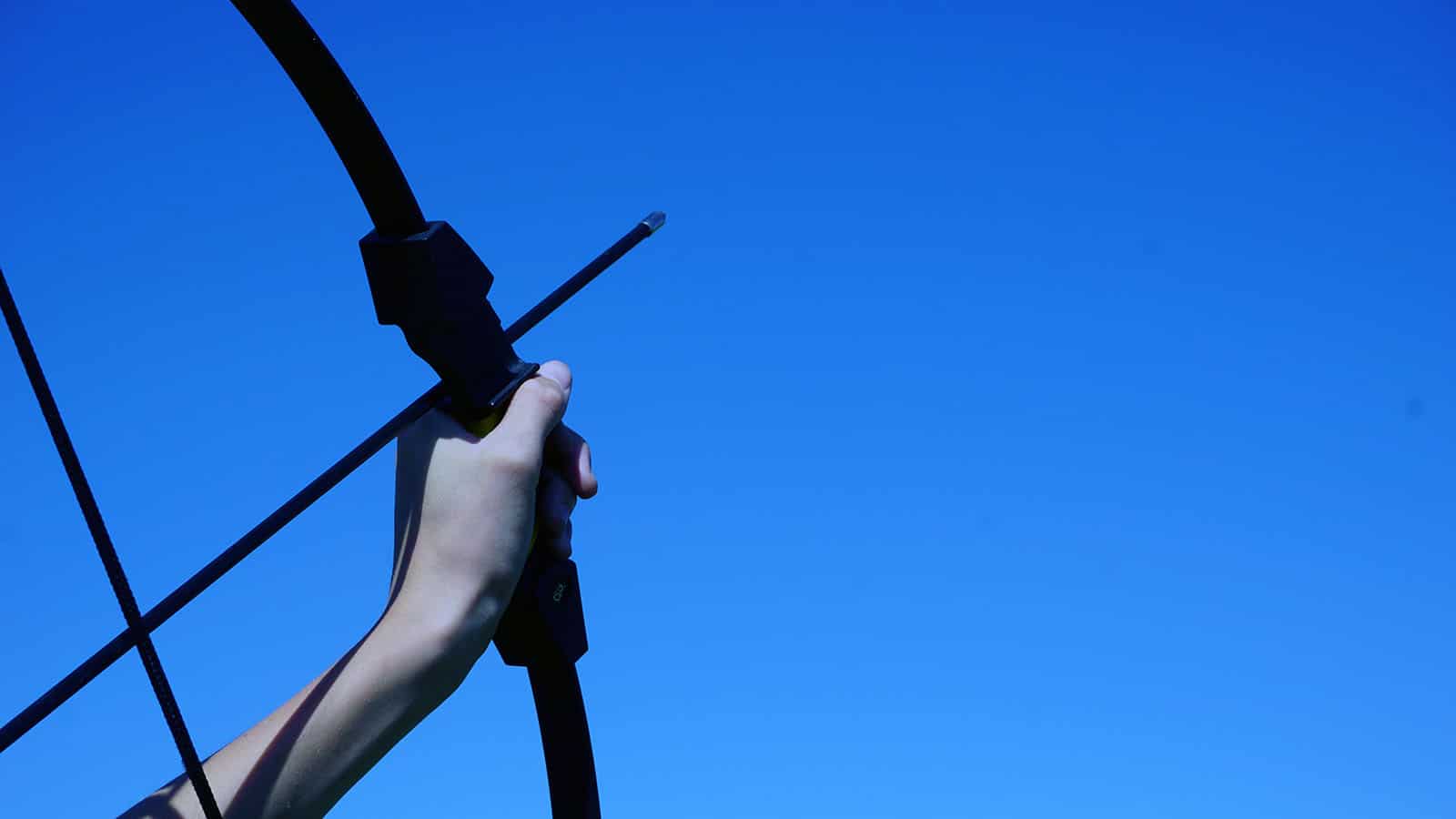Longbow and Recurve bow are two of the most popular bows in archery history, and both of them have their pros and cons. Their design, materials used, and other features make each bow unique. So, if you want to buy a bow, which would be better for you? In this recurve vs longbow article we will look at their differences and choose which is better.
What is Longbow?
Longbows are excellent for recreational backyard shooting and conventional archery uses. Although they are less prevalent than recurve bows, they are also used in target, field, and 3D archery. In addition, they may be used for bowhunting, although the bow’s draw weight needs careful consideration.
Longbows are excellent for beginners since they are simpler for inexperienced archers to fire accurately and provide a great entry point into the sport.
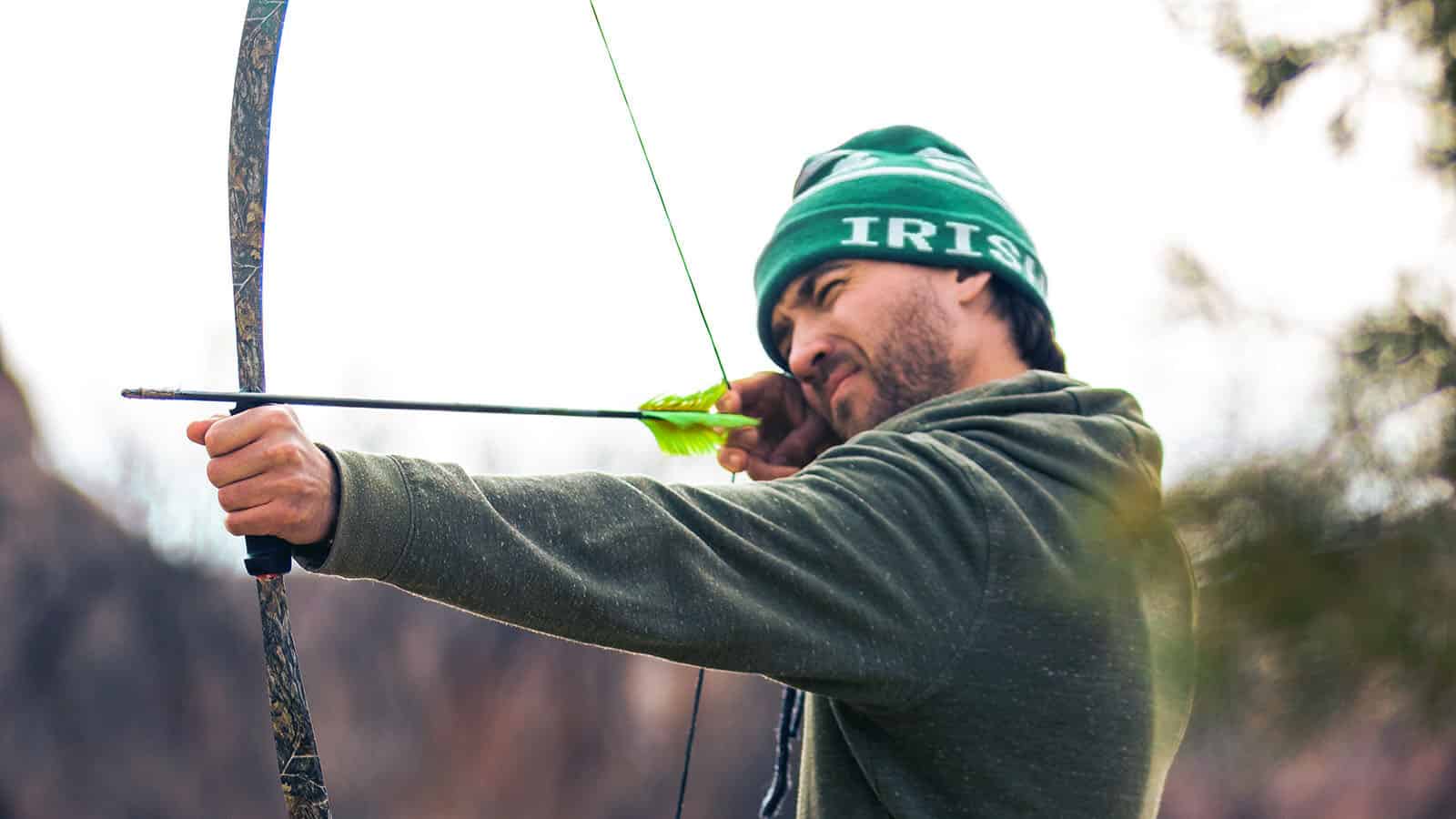
Get this Longbow if you choose to use one.
Pros:
- Forgiving
- Easy to use for beginners
- Substantially gentler on the fingers and joints of the archers
- Less noisy when they fire
Cons:
- May cause the bow hand to experience additional hand shock
- Often aren’t as effective for bowhunting (you need a greater draw weight)
- Bigger and more difficult to store and move
What is Recurve Bow?
Recurve bows are arguably the most flexible bow, used for target archery, field archery, 3D archery, and bow hunting. Recurve bows excel in having strength, quickness, and precision. They may have a little harder to shoot, but you’ll see results if you practice.
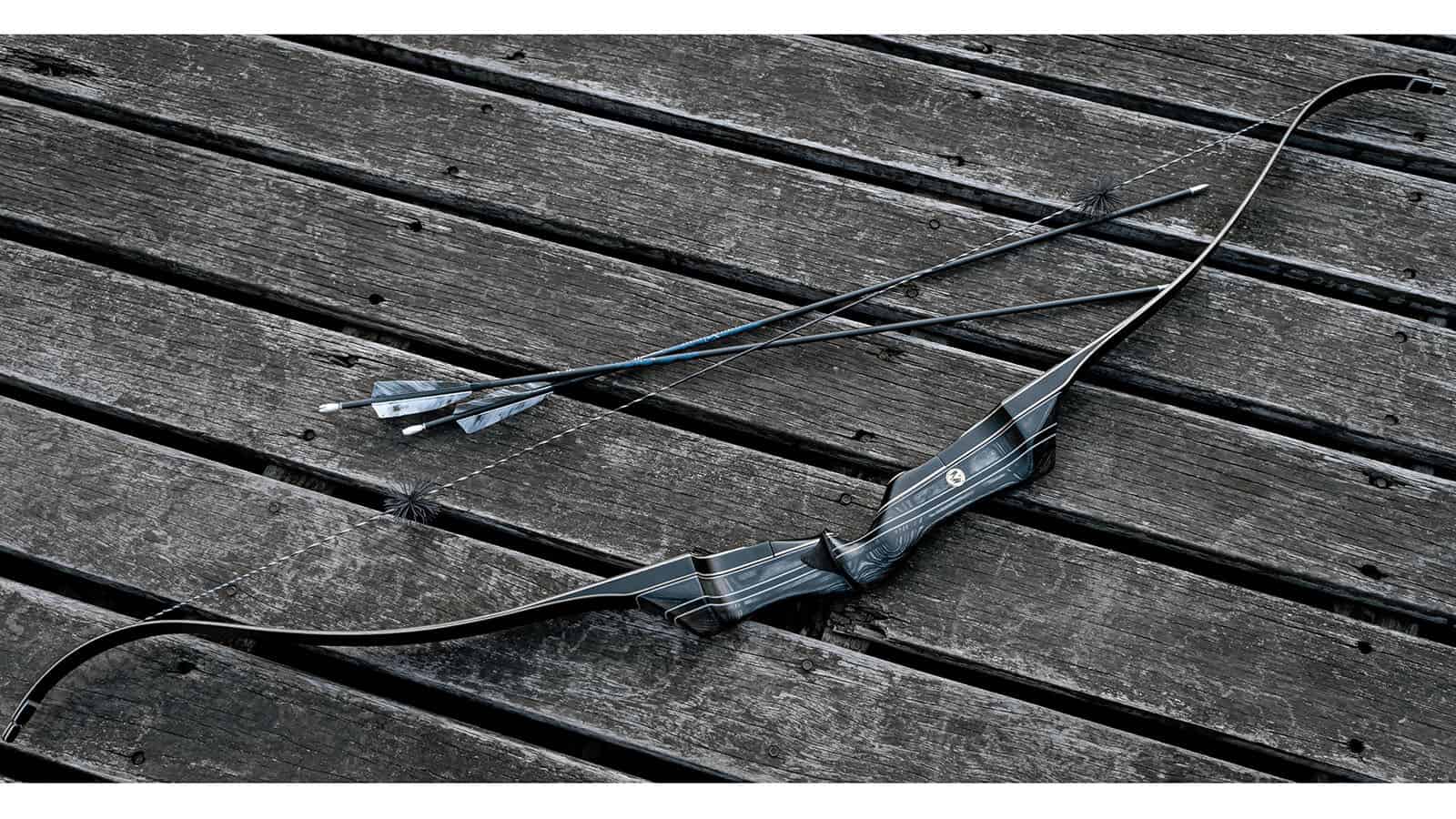
Check out this beginner’s recurve set if you consider buying a recurve bow.
Pros:
- Faster and more potent than longbows
- Significantly more accurate compared to longbows
- More effective for bowhunting (provided the correct draw weight is used)
- Far more portable and convenient to store
- Most adaptable kind of bow and have a variety of archery techniques
Cons:
- More difficult to use than longbows
- More practice to shoot accurately
- May place greater strain on joints and muscles
- Cannot match the power of recurve bows
Difference between Longbow and Recurve bow
The longbow and the recurve bow have a few things in common. They both have a string and a limb, but their shape and many other things are different. Let us discuss their differences to help you make a good decision.
Noise
Longbows are much quieter to shoot than recurve bows because they don’t have a bowstring that makes contact with the bow’s limbs when you discharge the arrow.
But recurve bows make a lot of noise when shooting arrows, so it’s harder to sneak up on people or be quiet when shooting at night.
However, you can get more silent shots at night with longbows because they don’t make as much noise when they shoot the arrow.
Verdict: In terms of noise, longbows come out on top, and one equipped with string silencers even approaches ninja stealth!
Aim

Recurves move more quickly than longbows. The projected speed for an archer using a hunting-weight longbow (45–60 lbs) with a 28″ draw would be in the 160–170 fps range.
However, longbows are reputed to be more forgiving. While many of us mistakenly associate speed with accuracy, using a bow that can compensate for poor shooting form might increase the number of arrows that land where we intend.
In addition, because longbows are longer, the V created at full draw is less severe, guaranteeing that the string slips off the shooter’s fingers more easily. And another essential feature in the forgiveness area is the lessened string “pinch.”
Verdict: Longbow wins. The aim of a longbow is more precise than a recurve bow. This is because of its forgiveness, which makes it easier to aim accurately. However, if you are accurate with your shooting, you can hit your target repeatedly with recurve.
Portability
You may carry takedown recurve bows by removing the limbs and disassembling the stand into a riser, top, and bottom limb.
However, there aren’t many takedown longbows on the market right now, but they do exist. But while some takedown longbows are available, a conventional longbow is often a self-bow (or one-piece bow). And there’s no way to destroy that, whether it’s made of a single piece of laminated wood or numerous parts.
The more prevalent recurve has an advantage in mobility due to this and the fact that it is typically shorter.
Verdict: Recurve won this round. Recurves are smaller than longbows, making them easier to carry around while hunting or traveling.
Hunting Efficiency
Both bow varieties are adequate for hunting, although recurves often have higher power. For accuracy and humanitarian reasons, speed and power are crucial in hunting scenarios.
Verdict: Recurve bows win this round because they have higher power compared to longbows.
Old
Longbows are older than recurve bows since they have been around for much longer. You will also see the bows in old movies like Robin Hood. Therefore, a longbow is a way to choose if you want a bow that evokes thoughts of nostalgia or a sense of the Middle Ages.
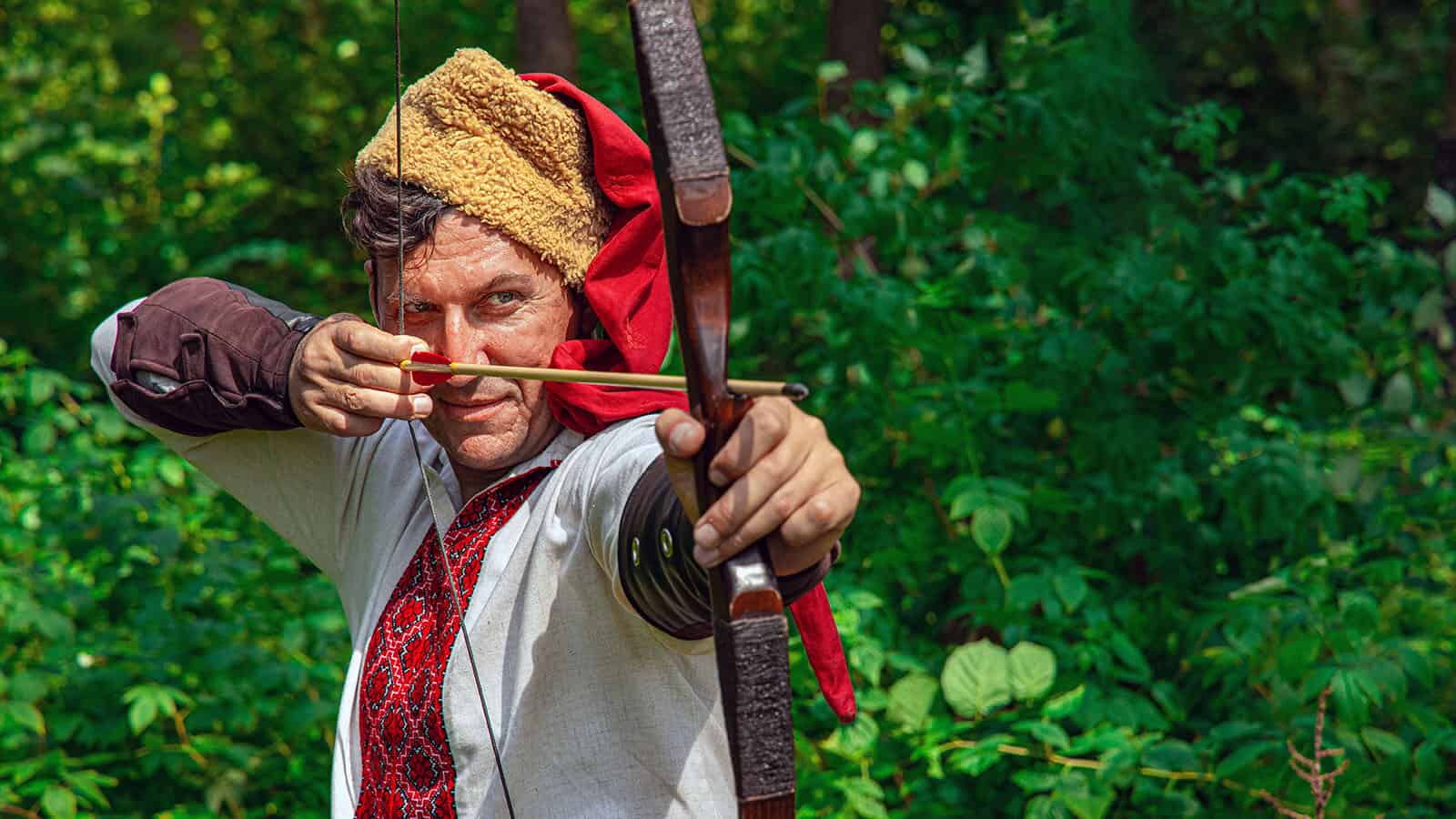
Verdict: Longbows win this round since they have been around for ages.
Ease of use
Recurves are easier to use because they have less weight at the tip of the arrowhead than traditional English longbows.
In addition, because there is less weight at the end of the arrowhead, you don’t have as much momentum behind your shot when you release it from your bowstring. This means that your shot will go farther without losing any speed or power behind it.
Verdict: Recurve once again wins this round. The weight alone makes it easy to use.
Adjustability
According to the preceding part, the recurve bow is more convenient because of its small size and lightweight but that’s not all, recurves are also significantly more adjustable since they offer more tuning choices.
The best recurve bow support stabilizers, sights, arrow rests, and specific models (ILF bows) let you switch out the limbs. Due to its adaptability, you can adjust your configuration in various ways. And although there are few takedown bows which do this, they are not common.
Verdict: Recurve wins this round. Many producers also produce customizable recurve bow weights and you can replace the pieces of a recurve bow when you break one of its limbs, unlike a longbow, which, once damaged, cannot be repaired.

User’s Height
When using standard or smaller-sized bows, an archer of a massive build could occasionally feel uncomfortable. Shorter bows feel awkward and are considerably harder to shoot. To draw the bow back to its maximum draw length, you might need to use additional upper-body strength and force.
The best longbows is the answer you’ve been looking for if your stubby bow makes you feel uneasy and clumsy. Smaller longbows start at 64 inches and can be up to 72 inches long, depending on the draw length.
It would help if you got a longbow as tall as you are, as long as your draw muscles are strong enough. Try the Japanese yumi, which can be as long as 96 inches if you want a longbow.
Verdict: There is no true winner here. Your height determines which wins in this case. However, as I’ve already indicated, shooting longer bows is generally easier due to the improved stability of the bow’s body. Although the force needed to draw back varies, the longer, the better.
Beginner-friendly
It could take some time for a beginner to become acclimated to the feel of the bow and establish good shooting form. It’s very normal, so don’t be alarmed! However, bad form can occasionally harm the bow and reduce the accuracy of your arrows while you are first learning the proper shooting form and posture.
Although the longbow is theoretically narrower than the recurve bow in width, the longbow’s actual body is heavier and thicker. But, recurve bows are named after the points of the bow that curve away from the beginner; unlike longbows, their bodies are not as deep.
Even if it’s not entirely your fault, recurve bow might make you feel less secure in your nascent archery abilities! It needs a lot of practice and talent to prevent twisting your recurve bow and get the most accurate and precise shot.
However, the longbow’s robust body makes it nearly impossible to twist its limbs, making it considerably easier to discharge arrows straight. That is one of the main reasons the longbow is far more forgiving to beginning archers.
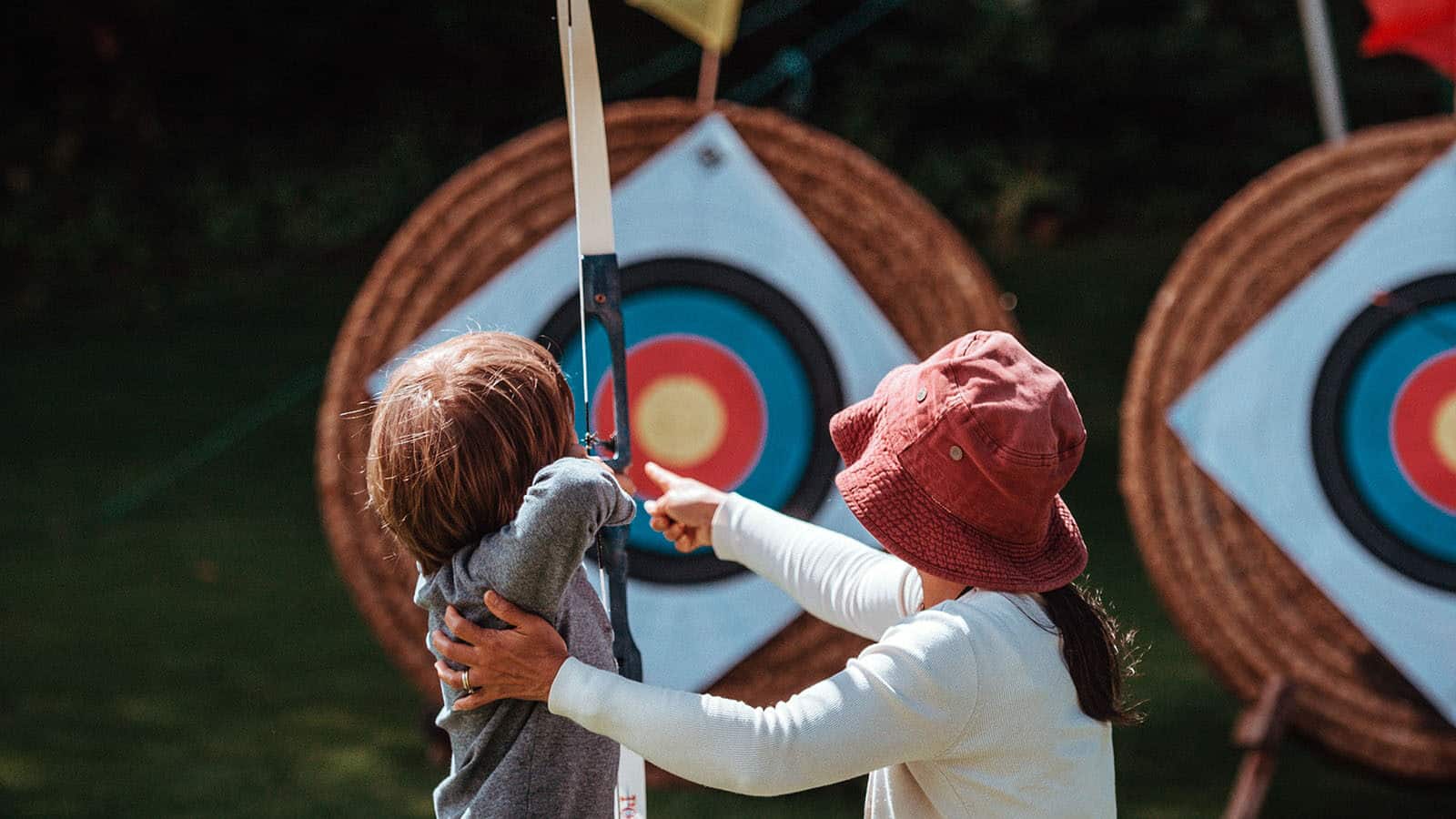
Verdict: Longbows wins. Although heavier than recurves the chances of seeing real results for beginners after shooting arrow is higher than in recurves.
Material
Traditional longbow construction involves curing the yew wood for one to two years before painstakingly shaping it over the next three to four years. The bow stave’s cross-section is shaped like a D.
However, the recurve comprises the riser and limbs (the centre section of the bow). The limbs are frequently built with fibreglass, carbon, and wood layers on a core of carbon foam or wood. The riser, often constructed individually, is composed of wood, carbon, aluminium, or magnesium alloy.
Longbow strings are composed of hemp, flax, or silk and are linked to the wood using horn “nocks” that fit onto the bow’s end. While recurve bow strings are increasingly frequently made of contemporary synthetic materials. The recurve’s rope fastens to the tips of both limbs, converting the limbs’ stored energy into kinetic energy for the arrow.
Verdict: Recurve bows win this round.
Availability
Recurve bows are currently regarded as the industry standard since they give archers a lot of alternatives. As a result, recurve bows will likely be considerably more readily accessible for purchase than longbows.
Also, recurve bows are the best option for competitive archers who desire to compete in competitions, clubs, or the Olympics.
Verdict: Another score for recurves. You can find a recurve almost anywhere now. They are common and acceptable almost anywhere.
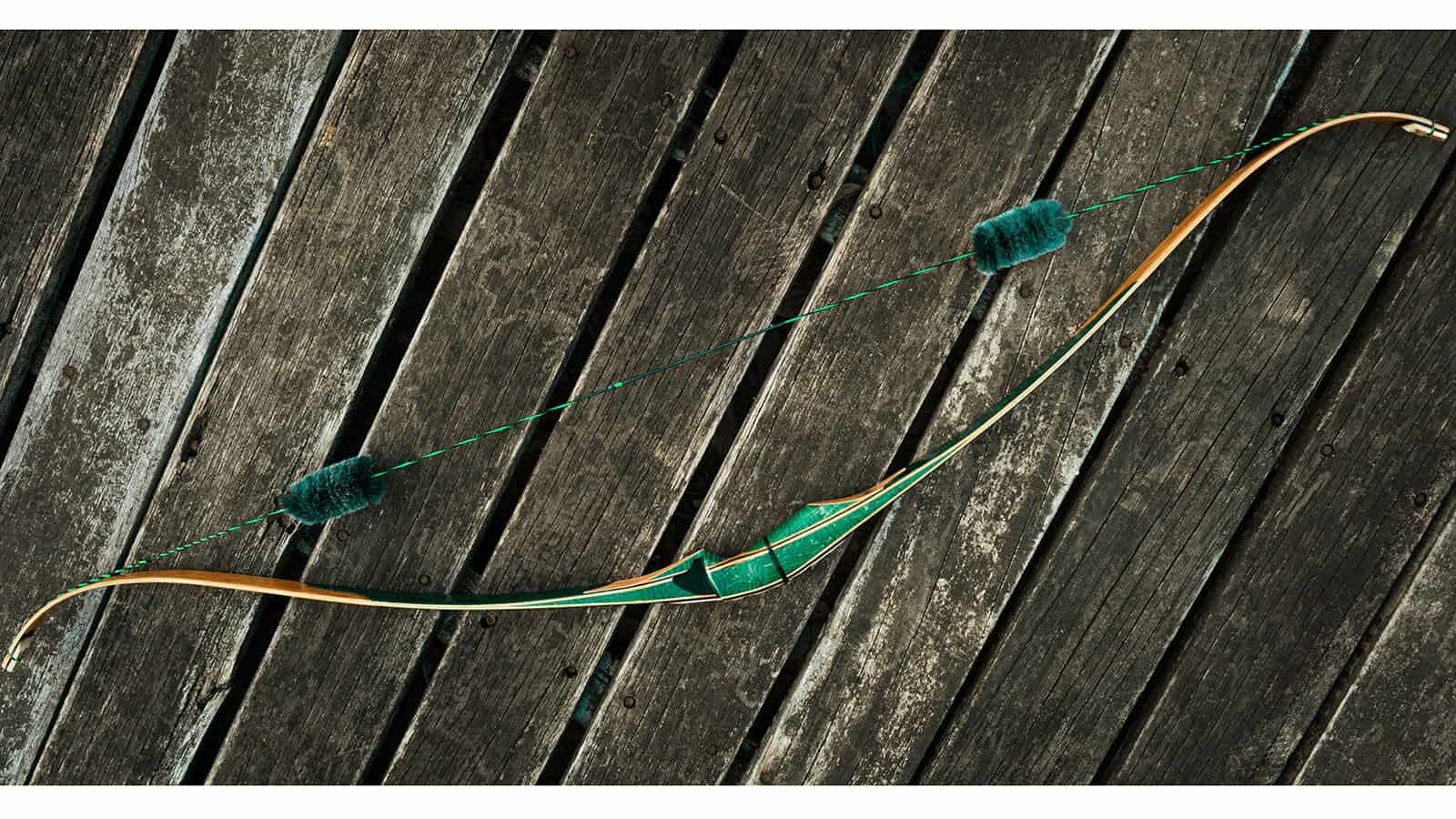
Price
There are different Price ranges for longbows and recurves now. However, Recurves are generally less expensive than Longbows.
Verdict: And in this final round Recurve takes the cup! Recurve bows are the best option for budget-conscious archers.
Longbow Vs Recurve – Which Is Better?
Well, the choice between a recurve and a longbow is mostly a matter of taste. While the above comparisons aid your decision-making, you may always give both bow types a go to see which one you prefer.
Remember each style has matching accessories as well. And what number of archery accessories you intend to use depends on your bow. For example, you could use quivers, arrow rests, peep sights, string silencers, stabilizers, and other accessories.
However, beginning archers must concentrate first on selecting a less powerful bow. Your first bow should be simple to use and hold. So, recurve bows are typically the ideal option since they are more contemporary and compatible with a wider range of accessories.
Also, when picking a bow type for target shooting, keep in mind that there are shooting contests that accept both bow kinds. Archers who intend to compete should use a recurve bow because most tournaments need them.
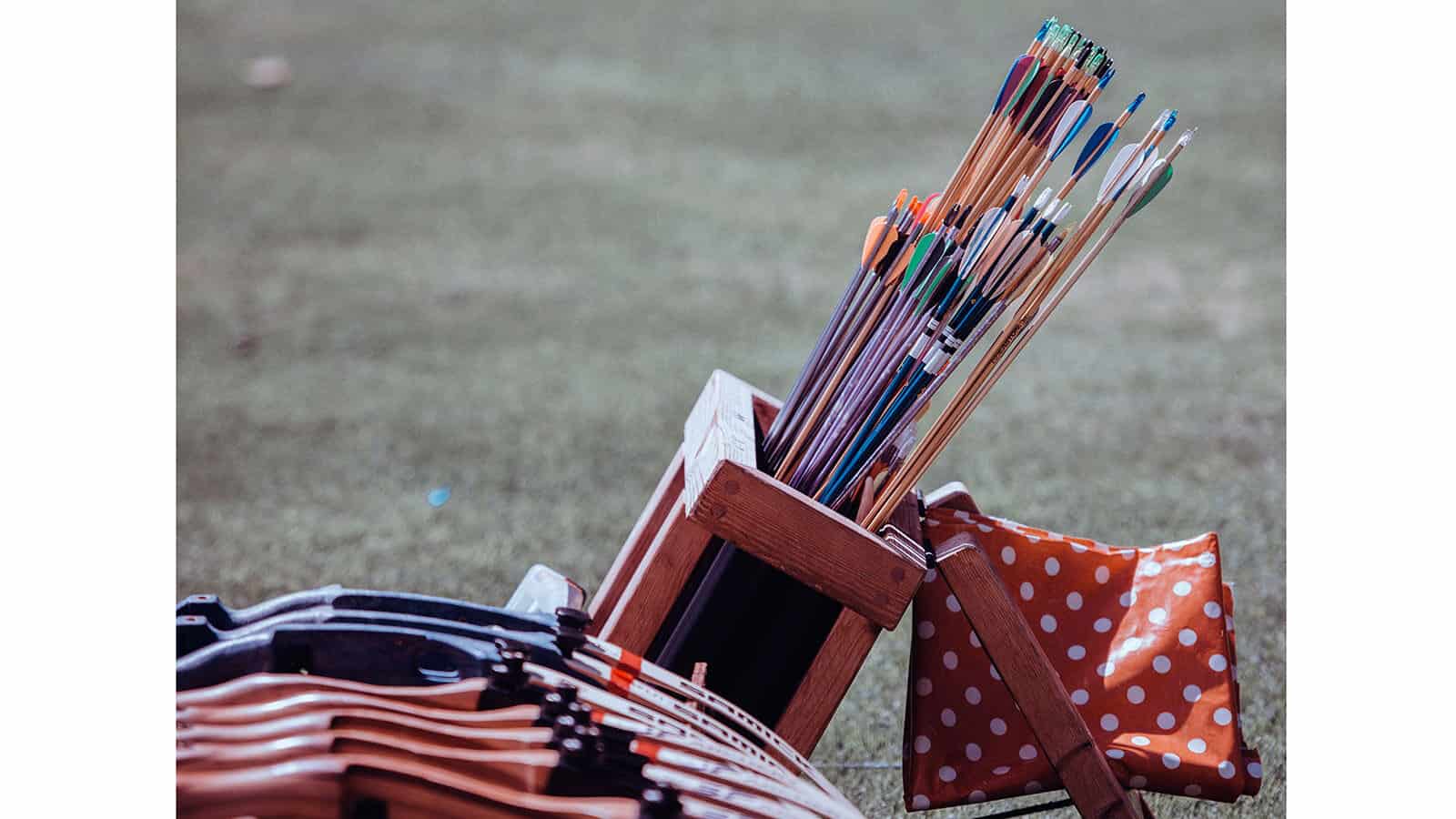
The Bottom Line
Various factors influence whether you should use a recurve bow or a longbow. First, what will you mainly use your bow for? What are your second and third areas of interest? Do you like the accuracy or the feel of a conventional bow?
Looking at the information offered by several tests (in the form of records from national and international archery events and competitions): Recurves outshoot longbows in speed, accuracy, and range.
Do you prefer a recurve over a longbow now that you know this? Then, get a recurve bow. If not, a longbow could be for you. However, remember that longbows have several benefits over recurve bows.
So better yet, you can acquire all types of bows and use it depending on the sort of mood you’re in. I know I did.
Finally, I hope this has assisted you in determining the best kind of bow for you. Again, I wish you success with your purchase and encourage you to start shooting.
